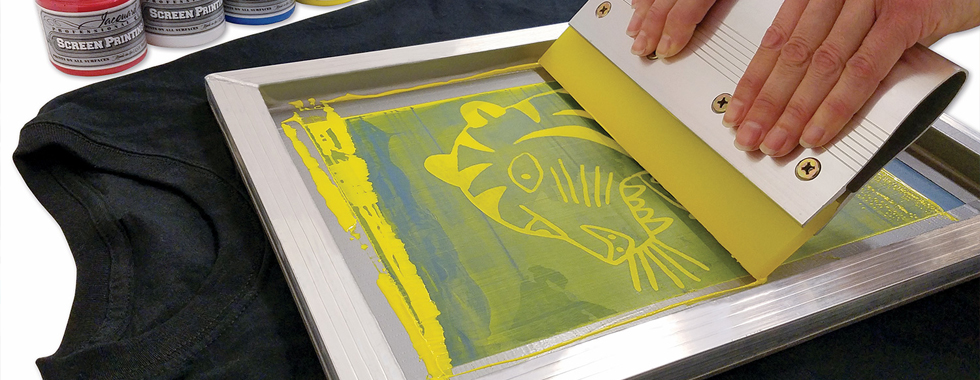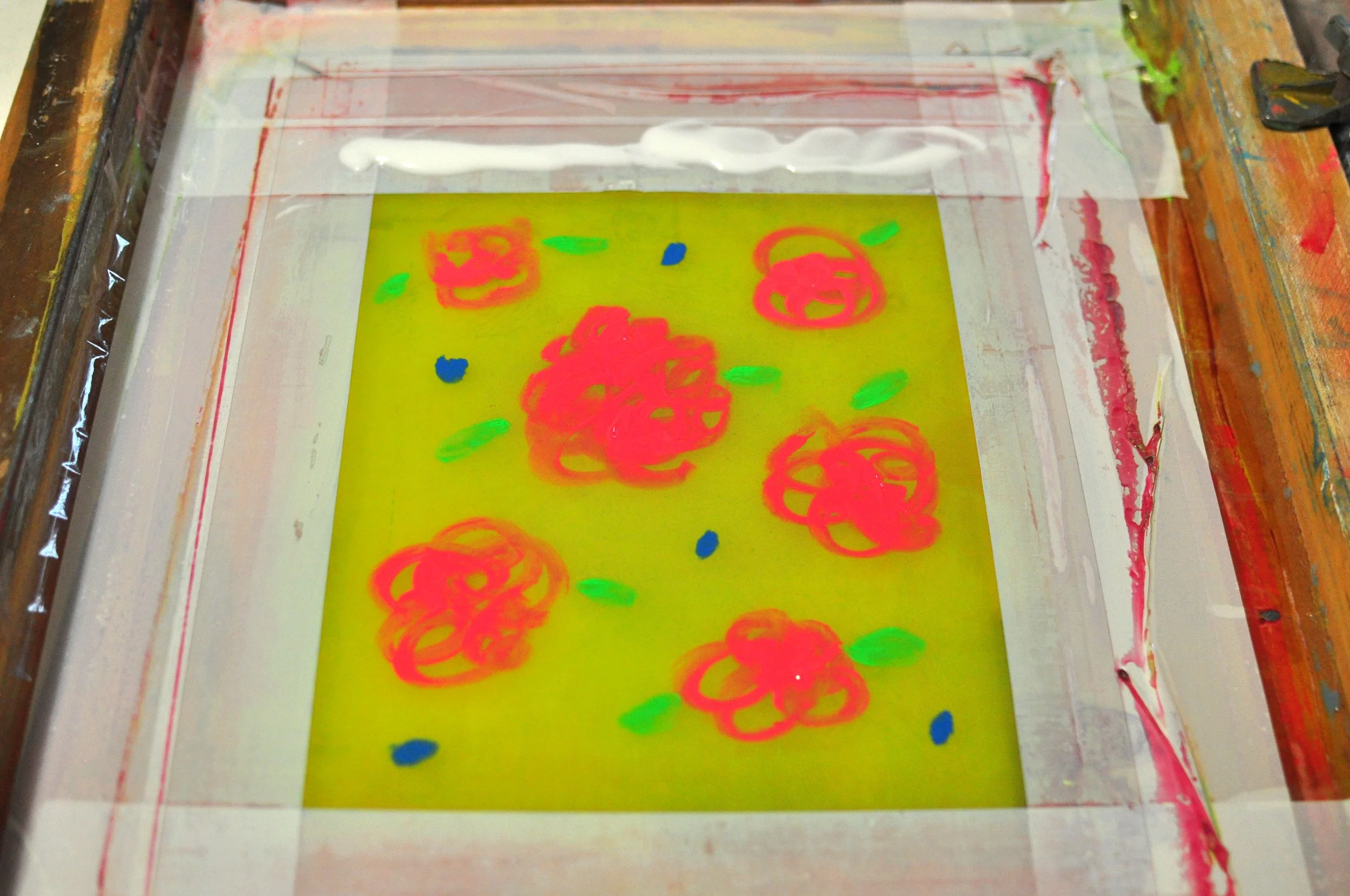ChatGPT said: 10:9 Design reviews: uncovering the strengths and weaknesses
Discover the Various Sorts Of Screen Printing Techniques for Your Next Project
Screen printing supplies a varied series of techniques that can boost any kind of innovative job. From typical methods like serigraphy to modern-day innovations such as direct-to-garment printing, each approach has its one-of-a-kind benefits. Specialized choices, including environment-friendly and metal inks, present also more opportunities. Recognizing these techniques can significantly affect the final result. Nevertheless, the obstacle lies in choosing one of the most appropriate technique for certain needs and preferred effects. What elements should one consider?

The Basics of Screen Printing
Screen printing might seem complex, it is essentially a straightforward process that involves moving ink through a mesh screen onto numerous surface areas. The method begins with the production of a pattern, which specifies the style to be published. This stencil is connected to a mesh screen, usually made of polyester or nylon. When the stencil is in location, ink is applied to the screen and pushed via the mesh using a squeegee, causing the desired pattern being published on the underlying product.
Screen printing can be performed on a wide variety of substratums, consisting of fabric, plastic, and paper, making it a flexible choice for different projects. The procedure permits intricate layouts and dynamic colors, making it prominent in sectors such as art, advertising, and fashion. Understanding these fundamentals equips individuals with the foundational expertise required to discover more innovative methods in screen printing.
Standard Screen Printing Techniques
Conventional screen printing techniques have actually been used for centuries, protecting the workmanship and virtuosity of this approach. This technique utilizes a mesh screen to move ink onto a substrate, such as textile or paper, allowing for durable and lively layouts. The process starts with creating a stencil, which blocks certain areas of the screen to manage where the ink will certainly be applied.
One popular method is serigraphy, usually used for imaginative prints and restricted editions. Another is making use of water-based inks, which are eco-friendly and supply a soft feel on textiles - 10:9 Design Abilene. In addition, standard techniques can consist of hand-operated printing, where craftsmens use ink with a squeegee, making certain accuracy and focus to detail
These methods continue to be valued in the market for their tactile high quality and the unique appearances they produce, attracting both makers and customers that appreciate the heritage of screen printing.
Digital Screen Printing Innovations
As the demand for faster production and personalization in the printing market has risen, electronic screen printing developments have become a game-changer. This innovation blends typical screen printing approaches with digital processes, permitting rapid prototyping and detailed styles that were previously challenging to accomplish. One substantial improvement is the introduction of direct-to-garment (DTG) printing, which facilitates top quality, full-color prints on various fabrics without the demand for screens. Additionally, developments in ink formulas have actually caused environment-friendly options that preserve vibrant colors while decreasing environmental influence. Making use of automated systems better improves manufacturing, minimizing labor prices and boosting precision. These advancements not just cater to little batch orders and personalized designs but additionally enable quicker turnaround times, making them suitable for businesses concentrated on meeting client demands in a fast-paced market. Digital screen printing, consequently, stands for a vital advancement in the domain name of printing methods.
Specialty Screen Printing Methods
Discovering specialty screen printing approaches discloses a varied variety of techniques that press the limits of creativity and functionality in the printing market. Among these, glow-in-the-dark inks offer a distinct visual result, making styles come to life in low-light problems. Metal inks, known for their glittering finish, include a touch of high-end to published products. An additional innovative technique is discharge printing, which gets rid of dye from the textile instead of including ink, causing a soft, classic feel. High-density printing develops a raised texture externally, boosting tactile interaction. Additionally, water-based inks are getting popularity for their dynamic shades and lowered ecological influence. Each of these specialty methods satisfies certain style requirements, making it possible for musicians and brand names see this website to produce standout items that reverberate with their target markets. By leveraging these approaches, organizations can raise their screen printing projects to new elevations, ensuring unforgettable impacts.
Eco-Friendly Screen Printing Options
Eco-friendly screen printing options are obtaining grip as the market moves in the direction of sustainability. Lasting ink selections and using biodegradable products are crucial elements in decreasing the ecological influence of the printing process. By adopting these techniques, screen printers can add to an extra lasting future while preserving premium results.
Lasting Ink Selections

Biodegradable Materials Usage
As the screen printing market evolves, the consolidation of biodegradable materials is coming to be increasingly crucial for environmentally mindful techniques. Suppliers and designers are now checking out inks and substratums made from natural, renewable energies that decompose more effectively than typical equivalents. These biodegradable choices lower plastic waste and lessen environmental impact, aligning with the growing demand for sustainable products.
Common examples include water-based inks and organic cotton materials, both of which lessen harmful chemicals and promote eco-friendliness. Brands that embrace these materials commonly boost their market charm, bring in customers that focus on original site sustainability. As recognition of environmental problems continues to increase, the shift towards eco-friendly materials in screen printing is likely to gain momentum, fostering a greener industry criterion.
Choosing the Right Strategy for Your Task
Just how can one establish one of the most ideal screen printing method for a certain job? The choice rests on numerous aspects, including the material to be published on, the intricacy of the layout, and the wanted production quantity - 10:9 Design contact. For instance, direct-to-garment printing is perfect for intricate layouts with various shades, while conventional screen printing excels for larger runs of easier graphics
Furthermore, factor to consider of the end-use of the published thing is essential. For outside applications, strategies that offer longevity and weather resistance, such as plastisol ink, might be preferred. On the other hand, environmentally-conscious tasks may gain from naturally degradable materials or water-based inks.
Inevitably, comprehending the task's unique demands enables an informed choice, ensuring both aesthetic allure and useful longevity. By evaluating layout complexity, material compatibility, and manufacturing scale, one can successfully pick one of the most appropriate screen printing strategy to meet their job's objectives.
Regularly Asked Inquiries
What Is the History of Screen Printing?
Screen printing stemmed in old China around 1000 ADVERTISEMENT, developing through Japan and Europe. By the 20th century, it ended up being popular in industrial art and style, changing just how layouts were produced and dispersed around the world.

How Do I Prepare Art Work for Screen Printing?
To prepare art work for screen printing, one must ensure high resolution, make use of an appropriate shade mode, produce different layers for each and every color, and transform message to describes, guaranteeing compatibility with the printing procedure and desired result.
What Materials Are Best for Screen Printing?
The most effective materials for screen printing include high-grade inks, long lasting displays, and ideal substrates like cotton, polyester, or blends. Additionally, utilizing ideal solution and mops can enhance the printing process and outcomes.
Can I Evaluate Publish in the house?
Yes, screen printing at home is feasible. With the ideal products, arrangement, and techniques, individuals can create high-quality prints. However, careful consideration of workspace and equipment is crucial for effective results.

What Are Usual Blunders in Screen Printing?
Common blunders in screen printing include incorrect exposure times, poor ink uniformity, misalignment of displays, not enough cleaning of products, and ignoring to examine prints. These errors can endanger the high quality and accuracy of the end product.
Screen printing might appear facility, it is basically a straightforward process that includes visit the site moving ink via a mesh screen onto numerous surface areas. As the need for faster manufacturing and personalization in the printing market has actually risen, digital screen printing advancements have actually emerged as a game-changer. Discovering specialty screen printing techniques reveals a diverse range of strategies that press the limits of imagination and performance in the printing industry. The ideal products for screen printing include high-grade inks, sturdy displays, and appropriate substratums like cotton, polyester, or blends (10:9 Design Embroidery). Common blunders in screen printing include improper exposure times, insufficient ink consistency, imbalance of screens, insufficient cleansing of products, and ignoring to check prints